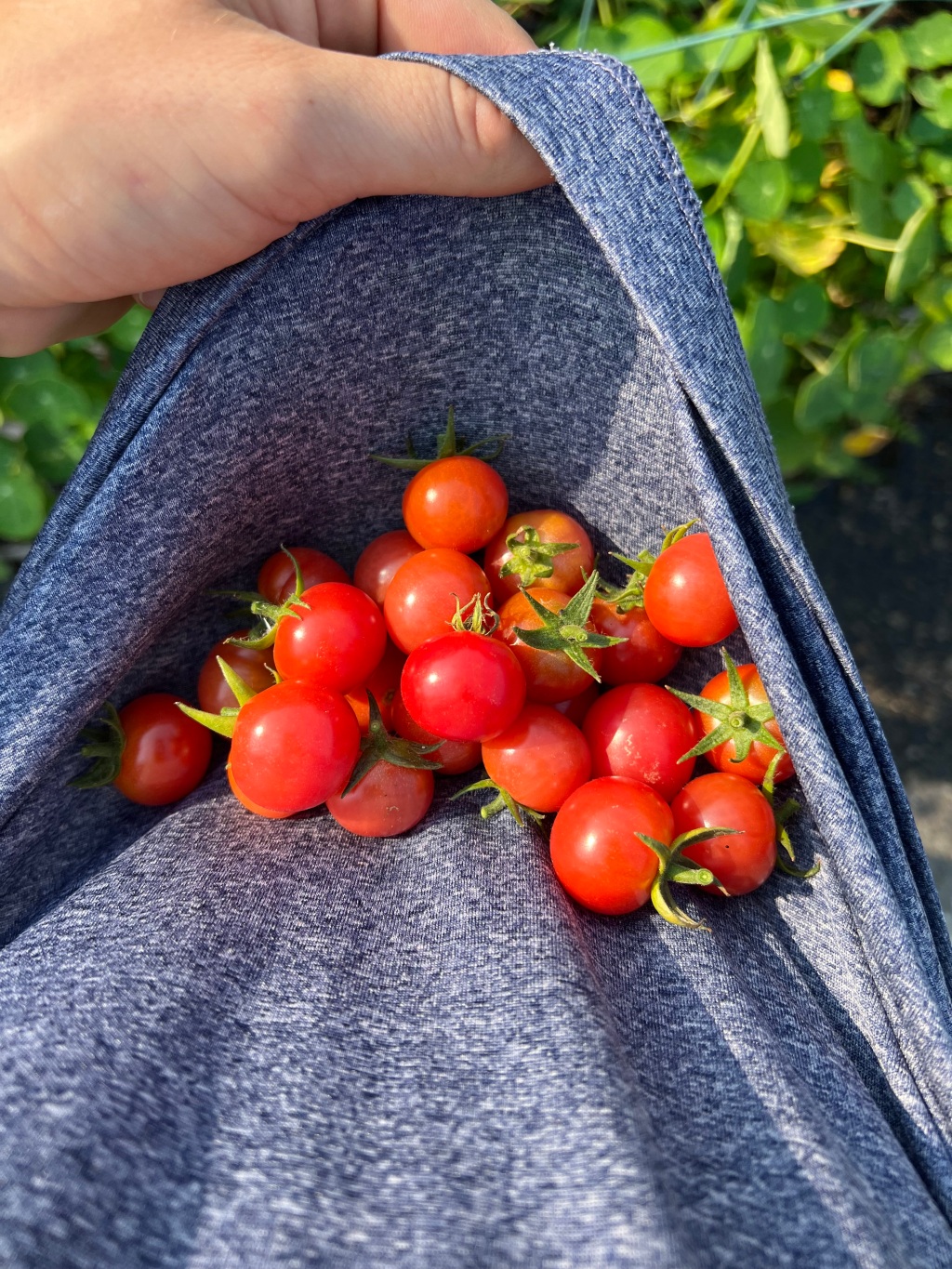“But aren’t tomatoes considered a fruit?”
When I first started working as a dietitian, I never expected so many of my patients to ask this question. But now five years into my career, it’s not a surprise anymore. Although my counseling sessions tend to focus on achieving specific goals, my clients also have the space to ask whatever nutrition questions are on their mind. What I would have never expected is how many of my patients are not just curious about tomato lore, but genuinely bothered by the uncertainty of its history.
As a dietitian, gardener, and life-long foodie, the answer always seemed to be quite simple. In the culinary world, tomatoes are often considered a vegetable due to its taste and use in cuisine. But in the botanical world, it’s quite obviously a fruit, carrying seeds in its flesh and growing from the bloom of a flower. Why is it then that so many are confused by the categorical distinction of the tomato but no other ‘vegetables’ that grow from a bloom? We’ve all debated how to categorize the tomato, but what about the eggplant? Cucumber? Bell pepper? And many other vegetables that are staples in our diets. This question has lingered with me for years and in trying to uncover the truth, I’ve learned that– well– it’s complicated.
Many Americans are familiar with the abundance of tomatoes in Italian and Mediterranean cuisine, a staple in dishes such as pasta, pizza, soups, caprese, sandwiches, salads, and more. Google “traditional tomato dishes” and the first page of hits will solely be filled with Italian recipes. However many Americans would be surprised to learn that the acidic fruit actually belongs to our southern neighbors.
Like many domesticated vegetables, the fruit of the wild tomato was much smaller, potentially as small as a blueberry, originating in the Andes. Evidence of a wild cherry-sized tomato was found growing in Ecuador 80,000 years ago. Many scientists believe that this tomato was domesticated by humans and slowly migrated northward to Mesoamerica. It’s theorized that around 7,000 years ago, the tomato was domesticated to grow similar in size to the larger fruit that we are familiar with today.
It wasn’t until Christopher Columbus colonized South America in the 15th century that tomatoes were introduced to Europe. The juicy, plump-red fruit that burst with sharp acidic flavors was seen by many Europeans as an aphrodisiac and ultimately dubbed the “love apple”. Food historian Stewart Lee Allen suggests in his book “In the Devil’s Garden” that the tomato’s seductive reputation may have been influenced by the spiritual beliefs of European colonizers.
Stewart also suggests that when explorers brought the tomato back to Europe, many Christians assumed that it was actually the forbidden apple reference in the Biblical story of the Garden of Eden. Due to the apple’s association with sin, it was only natural for many Christians to avoid the tomato. The tomato’s association with the apple can be found across Europe, earning such names as “love apple”, “gold apple”, “apple of paradise”, “wolf apple”, and “poison apple”.
Taboo, however, did not stop some European aristocrats from consuming the tomato at meals. A series of deaths among aristocrats was traced back to the tomato, believed to be poisonous due to its concentration of toxic alkaloids. These deaths enforced the idea that the tomato should be feared. Science and time eventually sorted out that the compounds in tomatoes were not in fact deadly, but that the tomatoes acidity released lead from pewter plates, causing lead poisoning in those that ate off of them. Regardless, the tomato remained and adored and was often grown as an ornamental plant and avoided for culinary purposes.
In the 18th century, European colonists introduced the tomato to North America, rarely considered consumable. Some American citizens, like Thomas Jefferson, did fight for the consumption of the tomato, growing the plants in his kitchen garden. Colonel Robert Gibbon Johnson, an American Farmer, made a scene in front of a courtyard, eating a basket full of tomatoes to prove their safety to a crowd.
The classification of the tomato was legally brought into question in 1887 when the U.S. government imposed a 10 percent duty on vegetables, but none on fruit. John Nix, a tomato importer, sued New York arguing that the tomatoes were a fruit. Although he ultimately lost the argument, the legal challenge was enough to call the categorization of the fruit into question.
Since the 19th century, acceptance and popularity of the fruit has grown not just in the U.S., but throughout the world. The toxic solanine was determined to be found mostly in just the plant’s stem and leaves, with little concentration in the ripe fruit itself. Its juicy flesh is so adored, over 20,000 people gather annually in Buñol, Spain to slip and slide in a 100-ton tomato fight. But despite its familiarity in our lives, our basic understanding of this household staple is still unclear. So let’s settle the debate that will still leave some in a tizzy: The tomato is both a fruit and a vegetable.
Sources:
Allen, Stewart Lee. In the Devil’s Garden: A Sinful History of Forbidden Fruit. Ballantine Books. 2002.
A history of tomatoes. The University of Vermont. (n.d.). https://www.uvm.edu/news/extension/history-tomatoes
Origin of species of corn, potatoes, and tomatoes – and some other interesting history. Cashman Nursery. (n.d.). https://cashmannursery.com/gardening-tips/2012/origin-of-species-of-corn-potatoes-and-tomatoes-and-some-other-interesting-history/#:~:text=Tomatoes%20are%20native%20to%20South,tomato%20was%20small%20and%20yellow.
The history of tomatoes: How a tropical became a global crop. Illinois Extension. (2020, July 25). https://extension.illinois.edu/blogs/garden-scoop/2020-07-25-history-tomatoes-how-tropical-became-global-crop
Roeloffs, M. W. (2023, September 3). Spain’s tomato-throwing festival kicks off-here are the world’s top festivals still worth traveling to this year. Forbes. https://www.forbes.com/sites/maryroeloffs/2023/08/30/spains-tomato-throwing-festival-kicks-off-here-are-the-worlds-top-festivals-still-worth-traveling-to-this-year/?sh=1e6661b3337f

Leave a comment